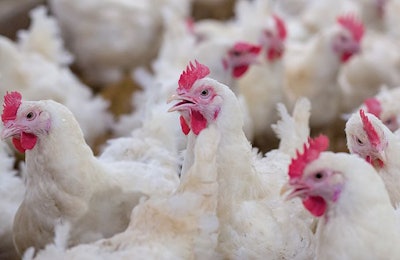
Poultry producers around the world are being affected by the impact of COVID-19, but the impacts vary markedly from market to market.
Different countries are at different stages in the disease’s progression, with some already relaxing restrictions while others are yet to feel virus’ the full effects. Additionally, some governments have been reasonably successful in halting the disease’s spread, allowing economies to continue with a degree of normality while, in others, governments have failed to act at all or have inadvertently made production more difficult.
A recent survey conducted by WATT Global Media attempted to directly find out how broiler and egg producer are being affected, and sought the sector’s views from around the world. Unsurprisingly, the results reflected the varying impact of the pandemic.
Earlier this month, producers were invited to fill in a short questionnaire in either English and Spanish and while some aspects of their businesses appear to be re-assumingly stable, this is certainly not the case across all areas. Some expressed confidence in how their governments were responding to their needs while, for others, business had ground to halt.
More than half of the respondents to our small survey came from Latin America, a part of the world that, so far has escaped the extremes suffered in some parts of the world, while 24% came from the United States and Canada, but European, Middle Eastern and Asian companies made their voices heard too.
Thirty-seven percent of respondents were involved in broiler production, while 33% were egg producers. The remainder represented allied industries.
What did producers have to say?
While demand spikes are not always as positive as they may at first seem, 47.8 of respondents said that they had seen demand for product increase over recent weeks, with 17.4% saying that the increase had been substantial. But this has certainly not been the case across the board, as 37% reported that demand had fallen, with 28% saying that the contraction had been substantial.
Some producers have reported falling demand and falling prices, while others have seen demand surge, unable to satisfy additional orders.
A little over 14% said that they were hiring more workers to cope with this upswing, but a similar number said that they had made layoffs. Perhaps an indication that, across the regions from which most survey responses came, the industry is holding up in the current crisis -- over 70 percent noted that the pandemic had not had an impact on staffing requirements.
But the pandemic is affecting how people work, and it may have longer term implications for staffing levels.
Over 37% of respondents noted that they had increased the remote working of non-production personnel.
Heightened interest in adopting the internet of things to better manage live production was expressed by 17% of respondents to make farms less reliant on workers, while over 14% responded that the pandemic had encouraged to further consider greater automation within processing plants. According to 8% of respondents, the issues caused by the COVID-19 pandemic have encouraged them to accelerate plans already in place to resolve labor issues already in place.
How is the pandemic impacting costs, logistics and inputs?
Again, there was a huge variety of response to our survey from market to market.
Some producers bemoaned a lack of worker productivity, or of having to pay hourly bonuses to keep staff working while, for others, shortages of cleaning products for use at slaughter and in processing have been an issue. Yet illustrative of how different markets are experiencing the disease in different ways, one respondent noted that the disease was still not being taken seriously and preventative measures were not being followed.
Fluctuating prices for additives, a build-up of inventory and, in one case, a complete inability to function, were also highlighted.
How is the disruption affecting plans for the future?
Some producers expect that, once the pandemic is over, everything will simply return to normal. However, others noted that they would carry greater inventory to make them more prepared for the future. The need for suppliers to be more reliable was also highlighted.
Seventy-seven percent of respondents noted that they wanted a clearer picture of what their suppliers are doing to ensure availability and sustainability of inputs. They also want to be better informed with market data and more communication, including through virtual sales meetings, with the primary source of information on the outbreak cited as being television channels and trade journals.
For some, government support has been seen as sufficient to help them through the crisis, but this is certainly not the case universally. Some respondents noted that their governments had promised a lot but were yet to deliver, while others accused public bodies of poor planning, or a failure to explain good biosecurity or of taking any steps at all.
View our continuing coverage of the coronavirus/COVID-19 pandemic.

















